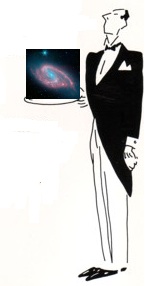The Spitzer Extragalactic Representative Volume Survey (SERVS) and the DeepDrill survey

Survey information
SERVS is a warm Spitzer survey which images approximately 18 square degrees in the centers of the SWIRE XMM-LSS, ELAIS-S1, CDFS, Lockman and ELAIS-N1 fields to 20min (2mu Jy) depth at 3.6 and 4.5 microns. SERVS overlaps with the VISTA-VIDEO near infrared and Herschel-HERMES and SCUBA2-S2CLS far-infrared surveys. SERVS data are now available to all through IRSA at the link below. In 2014 we were awarded a further 1400hr to double the total survey area, covering the entirety of the LSST deep drilling fields in XMM-LSS, CDFS and ES1.- The SERVS data atlas at IRSA (image cutouts, catalog access and the Data Release 1 documentation)
- Summary of the radio through X-ray ancillary datasets in each SERVS field
- SERVS poster presented at the Pasadena AAS meeting, June 2009, giving details of the survey fields
- The SERVS survey definition paper (as posted to astro-ph)
- The survey definition paper for the overlapping VIDEO near-infrared survey
- The SERVS Tumblr microblog, with papers and other survey highlights
Science Goals
SERVS will take a complete census of the population of massive galaxies in the redshift range ~1-6 within a volume of ~0.8 cubic Gpc, large enough to overcome the effects of Cosmic Variance. Our key goals are:- Stellar mass assembly. Using a combination of SERVS and VIDEO we will be able to obtain photometric redshifts and robust stellar mass estimates for large numbers of high redshift galaxies.
- Obscured star formation. Combining SERVS with the Herschel HERMES and SCUBA2 surveys will allow the study of obscured star formation at high redshifts.
- The role of AGN. The combination of SERVS, SWIRE and Herschel data will allow us to find both normal and obscured quasars, and place them in their cosmological context.
- The role of environment. SERVS is large enough to span a wide range of cosmic environments, from voids to moderately rich clusters. We can thus investigate how the environment of a galaxy affects its star formation history and other properties.
- The highest redshift quasars. Combining SERVS and VIDEO will allow us to detect z>6 quasars which are significantly less luminous than those found previously, and thus constrain the faint end of the quasar luminosity function at high redshifts.
SERVS wiki (password required)
site info
© 2008 Mark Lacy | Original design by Andreas Viklund.